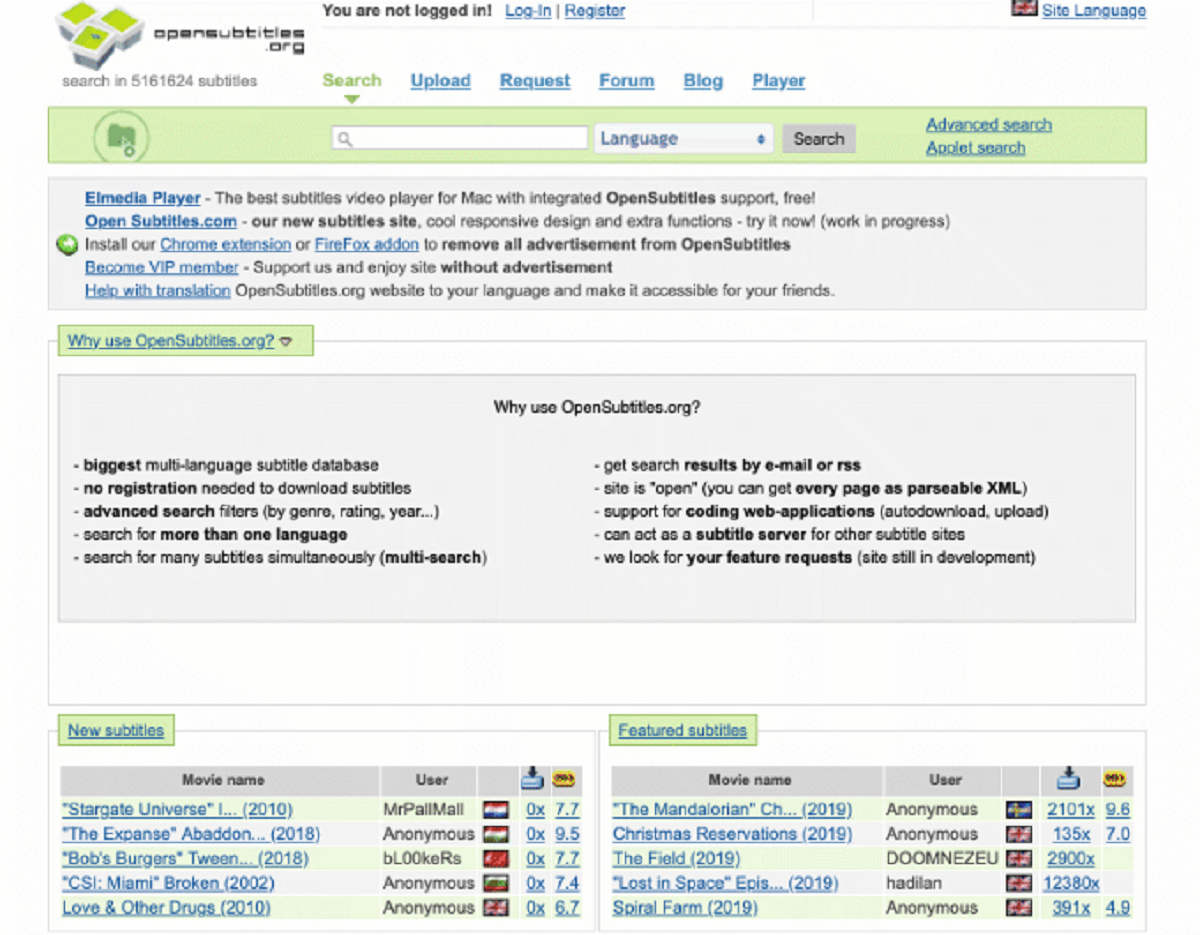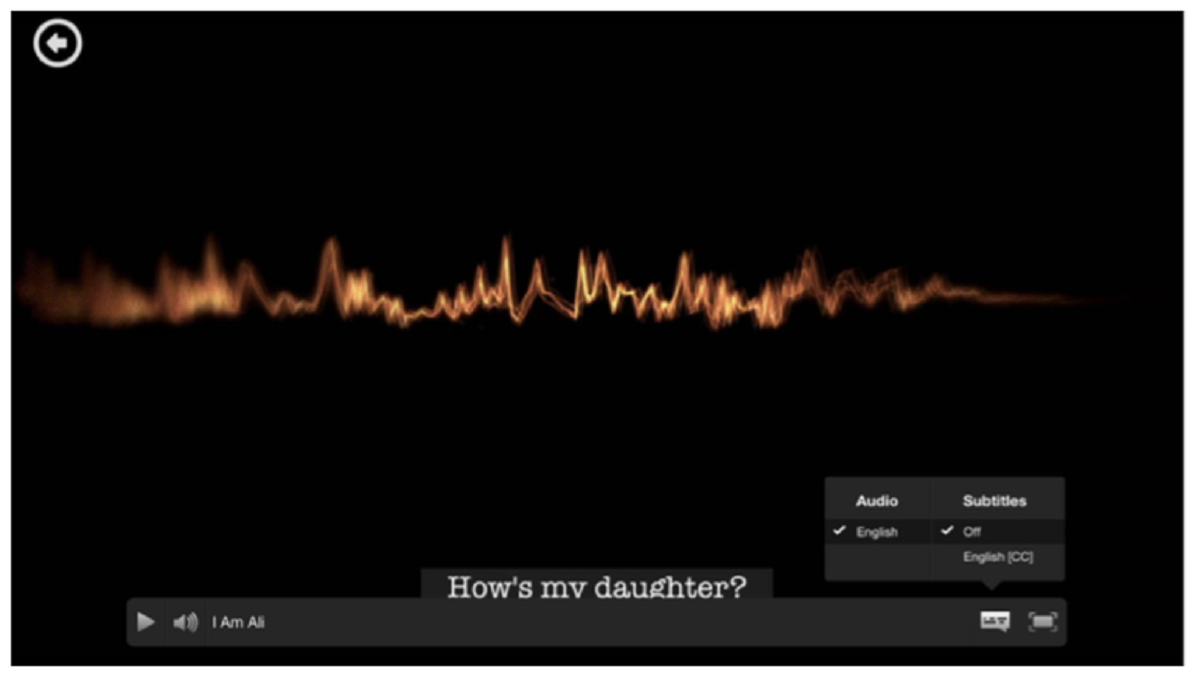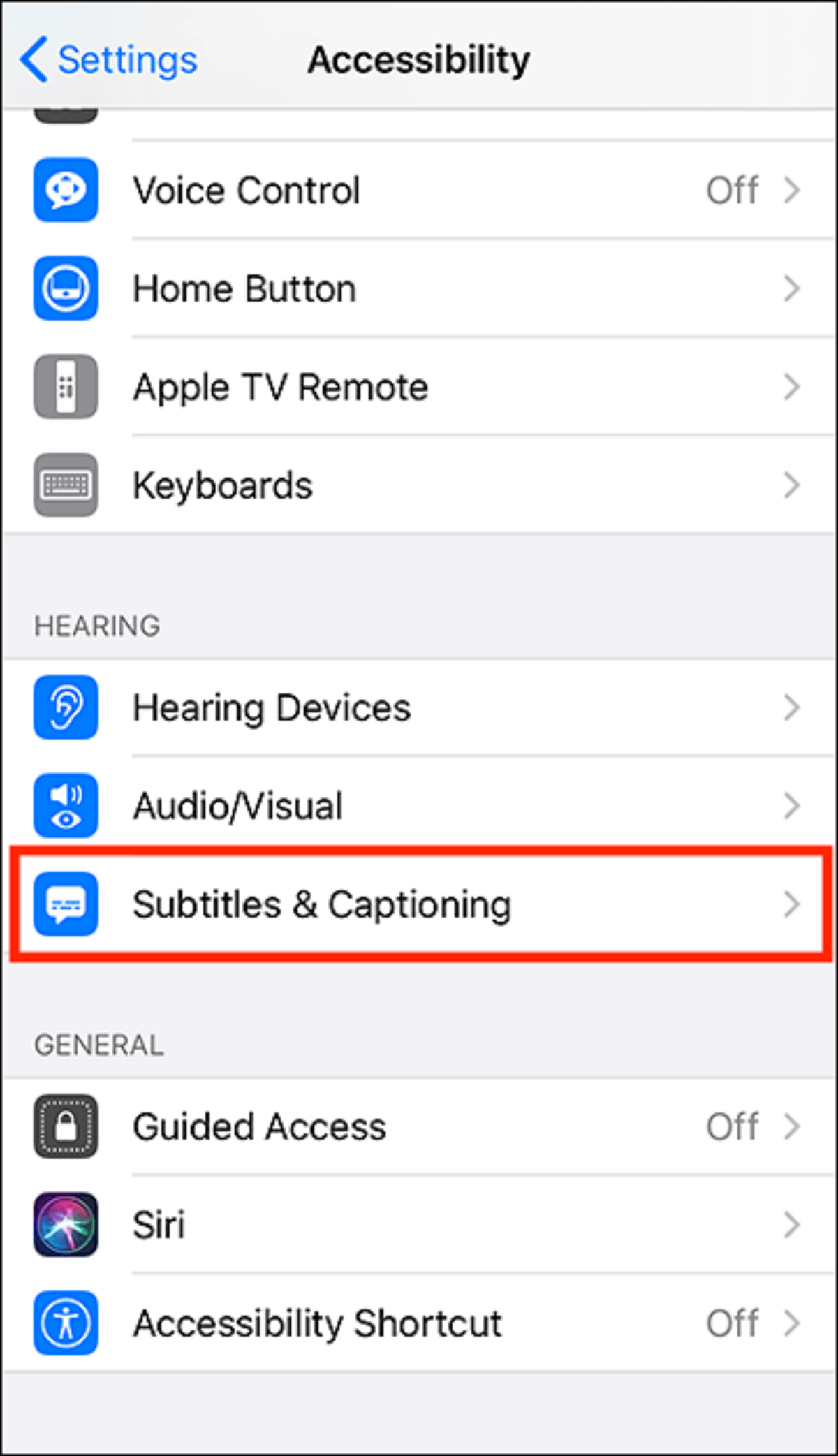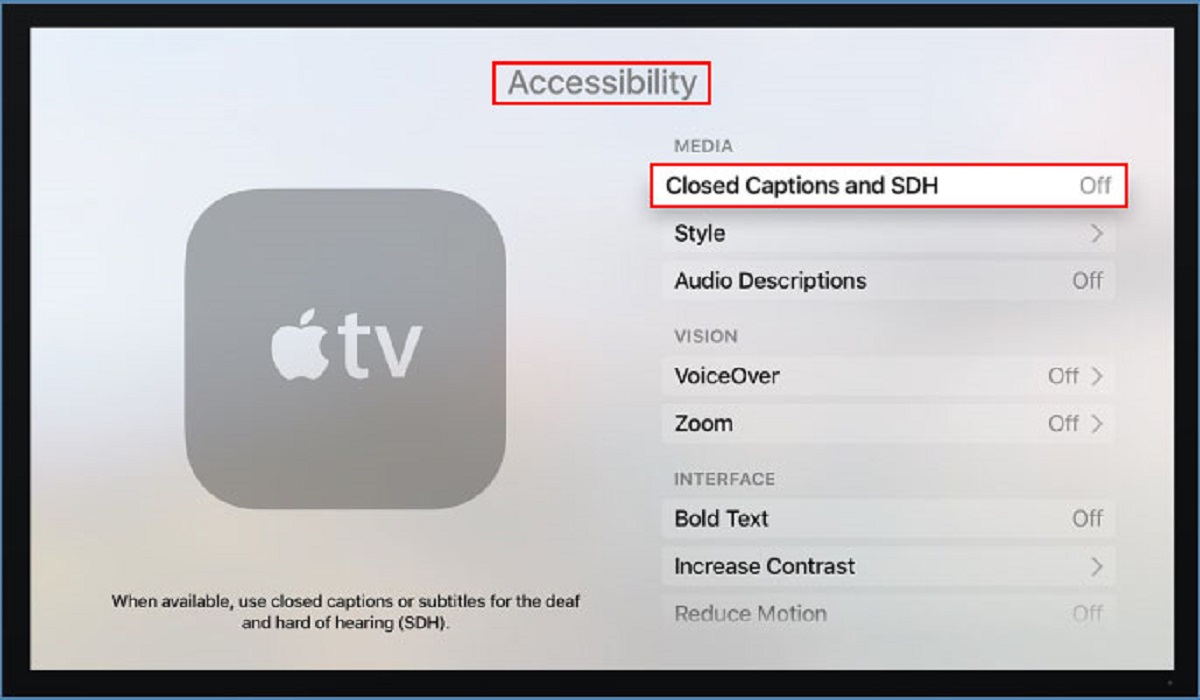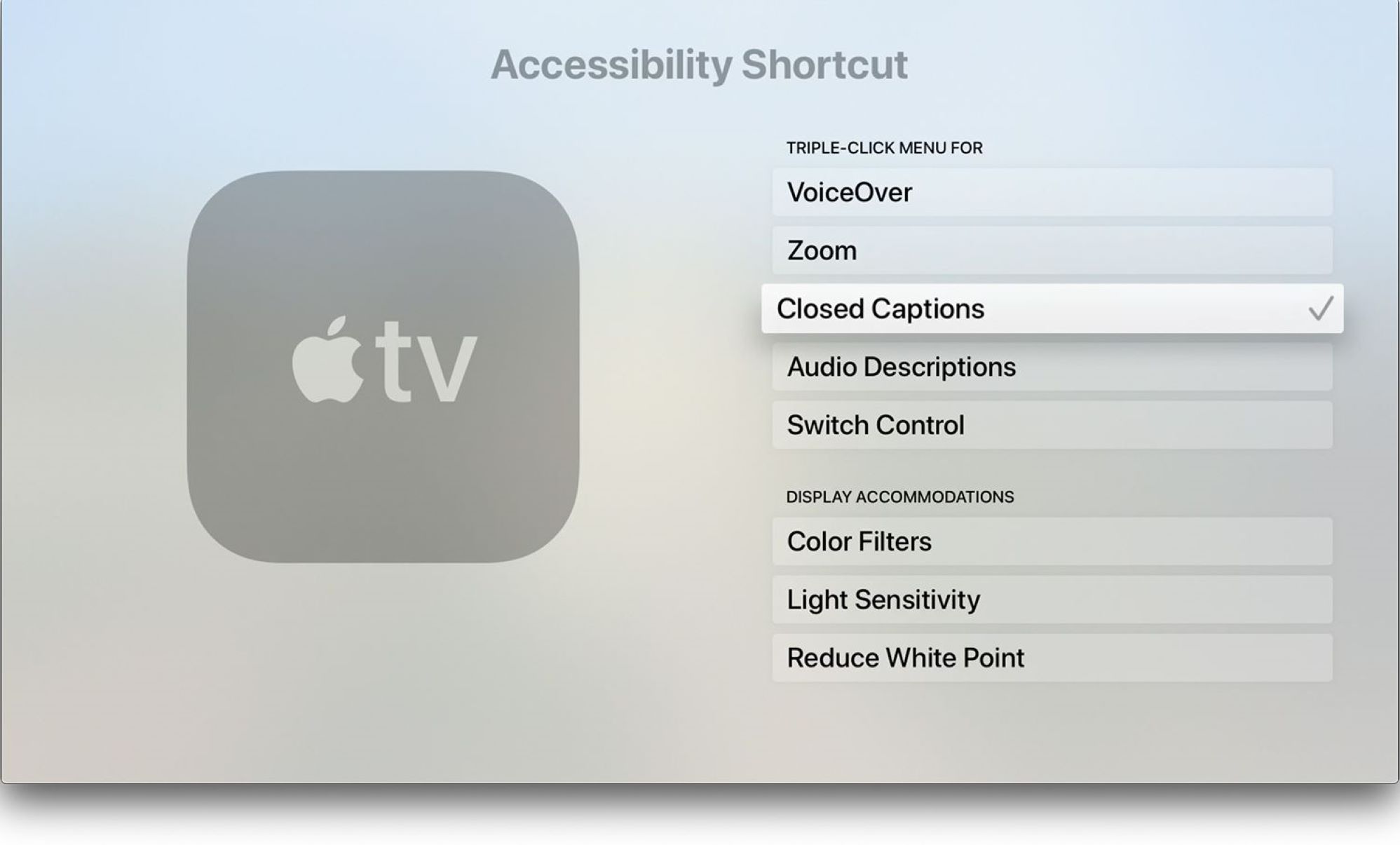Introduction
English SDH Subtitles, also known as Subtitles for the Deaf and Hard of Hearing, provide an inclusive viewing experience for individuals who are deaf or have hearing impairments. These subtitles go beyond the traditional subtitles that simply provide translations of dialogue; they also include additional information to assist viewers in understanding the audiovisual content.
English SDH Subtitles are designed to ensure that people with hearing difficulties can fully enjoy movies, TV shows, documentaries, and other forms of entertainment. By providing not only the dialogue but also important sound cues, sound effects, and even musical descriptions, English SDH Subtitles bridge the gap between what is spoken and what is heard, making on-screen content more accessible.
The purpose of English SDH Subtitles is not only to aid those who are deaf or hard of hearing, but also to benefit a wider range of viewers. They can be immensely helpful for individuals who are learning English as a second language, as they provide an additional means of comprehension. Furthermore, subtitles can be beneficial in noisy environments or situations where turning up the volume is not an option, such as libraries or public places.
Unlike regular subtitles, English SDH Subtitles provide a more comprehensive experience by including additional elements beyond just the dialogue. These elements may consist of descriptions of important sound effects, such as “[door creaks]” or “[explosion]”, or a description of the music playing in the background, such as “[upbeat jazz music playing]”. These details enrich the viewer’s understanding of the scene and ensure that they do not miss out on any crucial audio information.
Accessibility is a key consideration when it comes to English SDH Subtitles. By providing access to audio information for individuals with hearing impairments, these subtitles empower them to enjoy the same level of entertainment as everyone else. The integration of accessibility features in audiovisual content is crucial to promoting inclusivity and equal access to media for all individuals, regardless of their hearing abilities.
English SDH Subtitles have a significant impact on the viewing experience. They allow viewers to fully comprehend and immerse themselves in the storyline, capturing subtle details that may otherwise go unnoticed. The combination of dialogue, sound effects, and music descriptions creates a more engaging and enriching cinematic experience.
Definition of English SDH Subtitles
English SDH Subtitles, also known as Subtitles for the Deaf and Hard of Hearing, are a specialized form of subtitles that provide a comprehensive audiovisual experience for individuals who are deaf or have hearing impairments. These subtitles not only display dialogue but also include additional information such as sound effects and music descriptions to enhance the overall viewing experience.
English SDH Subtitles go beyond traditional subtitles by providing a more inclusive and accessible way of enjoying movies, TV shows, and other multimedia content. They are specifically designed to ensure that individuals with hearing difficulties can fully comprehend and appreciate audiovisual media.
Unlike regular subtitles, which primarily focus on translating dialogue, English SDH Subtitles incorporate various elements to convey audio information. Sound effects are denoted through descriptive text, allowing viewers to visualize and understand important auditory cues. For example, if a character slams a door, the subtitle may include the description “[door slams]”. This allows individuals who are unable to hear the sound to still grasp the action occurring on screen.
In addition to sound effects, English SDH Subtitles also provide descriptions of the background music playing in a scene. By including details such as the genre or mood of the music, viewers can gain a more complete understanding of the atmosphere being portrayed. For instance, the subtitle may indicate “[upbeat jazz music playing]” or “[eerie orchestral score]”. This not only enhances the storytelling but also creates a more immersive experience for the audience.
English SDH Subtitles are usually displayed at the bottom of the screen, synchronized with the corresponding dialogue and audio cues. They are typically indicated with uppercase letters, distinguishing them from regular subtitles. Some platforms and devices allow viewers to customize the font size, color, and positioning of the subtitles, ensuring maximum readability and comfort.
It is important to note that English SDH Subtitles are not exclusive to the English language. They can be available in different languages and are intended to provide accessibility for individuals with hearing impairments, irrespective of the spoken language in the content. Therefore, these subtitles can be found in a variety of languages, allowing a broader audience to enjoy audiovisual media without any limitations.
Purpose and Benefits of English SDH Subtitles
The primary purpose of English SDH Subtitles is to provide an inclusive viewing experience for individuals who are deaf or have hearing impairments. These subtitles ensure that everyone, regardless of their hearing abilities, can fully enjoy movies, TV shows, and other multimedia content.
English SDH Subtitles offer a range of benefits, both for individuals with hearing difficulties and for a wider audience. Firstly, these subtitles contribute to equal accessibility by providing an alternative means of understanding the audiovisual content. They enable individuals who are deaf or hard of hearing to follow the dialogue, sound effects, and music descriptions, thereby ensuring they do not miss any crucial information.
Furthermore, English SDH Subtitles can be utilized by individuals learning English as a second language. By providing visual representation of the spoken words, these subtitles aid in language comprehension and vocabulary acquisition. They serve as a valuable tool for language learners, helping them improve their listening and reading skills simultaneously.
English SDH Subtitles are also beneficial in situations where the audio cannot be fully heard or understood. In noisy environments, such as crowded cafes or public transportation, the subtitles ensure that important dialogue and sound details are not lost amidst the surrounding noise. Additionally, they can be useful for individuals with auditory processing difficulties or those whose first language is not English, making content more accessible and enjoyable for a diverse range of viewers.
Moreover, English SDH Subtitles contribute to the overall immersive experience of watching audiovisual content. By including descriptions of sound effects and music, these subtitles enhance the viewer’s understanding of the scene and create a more engaging and enriching experience. They allow individuals to fully grasp the emotions, ambiance, and storytelling elements portrayed through audio cues, leading to a more comprehensive and enjoyable viewing experience.
English SDH Subtitles also promote inclusivity and diversity in the entertainment industry. They encourage filmmakers and content creators to consider the needs of individuals with hearing impairments and provide accessible options for their work. By integrating these subtitles into media productions, creators can reach a wider audience and ensure that their content is enjoyed by individuals from all walks of life.
How English SDH Subtitles Differ from Regular Subtitles
While both English SDH Subtitles and regular subtitles serve the purpose of providing a written representation of dialogue, there are several key differences that set them apart. These differences are essential in catering to the specific needs and preferences of individuals with hearing difficulties.
One significant difference is that English SDH Subtitles go beyond translating dialogue and include additional elements to enhance the viewing experience. Regular subtitles typically focus solely on displaying translated dialogue in the viewer’s language of choice. However, English SDH Subtitles incorporate descriptions of sound effects and music, ensuring that individuals with hearing impairments can fully comprehend and engage with the audiovisual content.
Regular subtitles primarily provide a textual representation of spoken words and do not include details of any audio cues or background sounds. On the other hand, English SDH Subtitles provide descriptions of significant sound effects by including in-text notations. These descriptions help viewers who cannot hear the sound to visualize and understand the auditory elements of the scene. For example, if a car screeches to a halt, the English SDH Subtitle might include “[tires screeching]”. This feature ensures that individuals with hearing impairments do not miss out on any important audio information.
In addition to sound effects, English SDH Subtitles also incorporate descriptions of background music. This enables viewers to grasp the emotional tone and atmosphere of a scene even if they cannot hear the music. By including details such as the genre or mood of the music, the subtitles provide a more complete understanding of the auditory elements being represented. Regular subtitles usually do not include this level of detail about the music played.
Furthermore, English SDH Subtitles are typically displayed in uppercase letters, differentiating them from regular subtitles. This distinct formatting helps viewers differentiate between dialogue and sound descriptions, allowing for a more accessible and comprehensible viewing experience. Some platforms and devices even allow users to customize the appearance of subtitles, including font size, color, and positioning, ensuring optimal readability and comfort.
Overall, the key distinction lies in the inclusiveness and comprehensiveness that English SDH Subtitles offer. By incorporating descriptions of sound effects and music, these subtitles provide a more enriching and immersive experience for individuals with hearing impairments. They ensure that all viewers can fully understand and enjoy the audiovisual content, regardless of any hearing limitations.
Accessibility Considerations of English SDH Subtitles
Accessibility is a crucial aspect when it comes to providing a more inclusive viewing experience for individuals with hearing impairments. English SDH Subtitles are designed with accessibility in mind, ensuring that everyone, regardless of their hearing abilities, can fully enjoy audiovisual media.
One important consideration is the availability of English SDH Subtitles across various platforms and devices. Many streaming services, DVD releases, and digital content providers recognize the importance of accessibility and offer the option to enable English SDH Subtitles. This allows individuals to access and enjoy a wide range of content, including movies, TV shows, documentaries, and more. The availability of English SDH Subtitles on different platforms ensures that viewers with hearing impairments can have equal access to audiovisual media alongside their hearing counterparts.
Furthermore, it is essential that the format and presentation of English SDH Subtitles are accessible and user-friendly. The subtitles should have a clear and readable font, with appropriate size and color contrast to ensure maximum visibility. Flexible positioning options should be available to accommodate individual preferences and needs, such as placing the subtitles at the bottom or top of the screen.
Another consideration is the synchronization of English SDH Subtitles with the audio content. It is vital for the subtitles to be accurately timed with the dialogue, sound effects, and music descriptions, ensuring that individuals can easily follow and understand the audiovisual content. Any delays or mismatches between the subtitles and the audio can significantly impact the viewing experience and may hinder comprehension.
In addition to the technical aspects, it is essential to educate both content creators and viewers about the importance and benefits of English SDH Subtitles. Content creators should be encouraged to prioritize accessibility when producing audiovisual media, considering the needs of individuals with hearing impairments from the inception of their projects. By raising awareness and promoting accessible content, the entertainment industry can create a more inclusive and diverse media landscape.
Ultimately, the successful implementation and consideration of English SDH Subtitles in audiovisual content are significant steps towards ensuring equal access to media for individuals with hearing impairments. By embracing accessibility practices, content creators and distributors play a vital role in making entertainment more inclusive and enjoyable for all viewers.
How English SDH Subtitles Improve Viewing Experience
English SDH Subtitles have a significant impact on the overall viewing experience, not only for individuals with hearing impairments but for all viewers. These subtitles enhance the comprehension, immersion, and enjoyment of audiovisual media in several ways.
Firstly, English SDH Subtitles provide a textual representation of dialogue, ensuring that viewers can follow the conversations and understand the storyline even when the audio may be unclear or difficult to hear. This is particularly beneficial in situations where there are accents, unfamiliar dialects, or rapid dialogue delivery that may pose challenges for some individuals. The subtitles help viewers to catch every word and fully engage with the plot, enhancing their understanding and appreciation of the content.
Furthermore, English SDH Subtitles include descriptions of sound effects, allowing individuals with hearing impairments to visualize and understand important auditory cues. These descriptions enable viewers to fully comprehend and enjoy the rich soundscapes of the audiovisual content, whether it’s the subtle rustling of leaves, the crackling of a fire, or the roaring of waves. By including these sound descriptions, the subtitles add an extra layer of immersion, creating a more dynamic and realistic viewing experience.
Music also plays a crucial role in many audiovisual productions, setting the mood and enhancing the emotional impact of scenes. English SDH Subtitles offer descriptions of the background music, providing viewers with a deeper understanding of the ambiance and tone being portrayed. Whether it’s a suspenseful orchestral score or a lively pop song, the subtitles allow individuals to grasp the full emotional significance of the music, contributing to a more profound connection with the content.
Moreover, English SDH Subtitles provide a visual reference for important visual cues and non-verbal communication, such as gestures, facial expressions, and body language. These subtitles help convey the full meaning and nuances of the on-screen actions, ensuring that viewers do not miss out on any essential visual details. This is particularly beneficial for individuals with hearing impairments, but it can also benefit viewers who may have difficulty interpreting certain visual cues or who prefer a more comprehensive understanding of the content.
By improving accessibility and facilitating a deeper understanding of the audiovisual elements, English SDH Subtitles create a more inclusive and engaging viewing experience. They ensure that all viewers, regardless of hearing abilities or language proficiency, can fully enjoy and appreciate the content. English SDH Subtitles contribute to a more immersive and dynamic cinematic experience, enhancing the storytelling and allowing viewers to connect with the characters, emotions, and overall narrative on a deeper level.
How to Enable English SDH Subtitles on Different Devices
Enabling English SDH Subtitles may vary depending on the device and platform you are using to watch your favorite movies or TV shows. Here are some general steps to enable English SDH Subtitles on different devices:
1. TV and Blu-ray Players: If you are watching content on a smart TV or Blu-ray player, look for the “Settings” or “Options” menu. Within the menu, navigate to the “Subtitles” or “Captions” section and select “English” or “SDH” as the preferred subtitle option. Once selected, the subtitles should appear on the screen while playing the content.
2. Streaming Devices (Roku, Apple TV, Chromecast, Fire TV): Most streaming devices have dedicated settings for subtitles. On your device’s home screen, go to the settings menu and look for the “Accessibility” or “Captions” section. Within this section, select “English” or “SDH” as your preferred subtitle option. This setting should apply to all compatible streaming apps on your device.
3. Mobile Devices (Smartphones and Tablets): To enable English SDH Subtitles on your mobile device, open the video player app you are using to watch a movie or TV show. Locate the settings or options icon within the video player interface. Look for the “Subtitle” or “CC” option and select “English” or “SDH” as the preferred subtitle language. The subtitles should now be displayed on your screen during playback.
4. Desktop Computers and Laptops: When watching content on your computer, the ability to enable English SDH Subtitles may depend on the media player or streaming service you are using. Look for a “Settings” or “Options” menu within the player interface. In the settings, adjust the subtitle or caption settings and choose “English” or “SDH” as the desired subtitle language.
5. Online Streaming Services: Popular streaming services like Netflix, Amazon Prime Video, and Disney+ offer the option to enable English SDH Subtitles. Look for the “Subtitles” or “CC” button on the playback screen. Click on this button and select “English” or “SDH” as the preferred subtitle language. The subtitles will then be displayed while streaming the content.
It is worth noting that the specific steps and options may vary slightly depending on the platform, device, and service you are using. If you encounter any difficulties, consult the device’s manual or visit the support page of the streaming service for more detailed instructions on enabling subtitles.
By following these general steps, you can easily enable English SDH Subtitles on different devices and enjoy a more inclusive and accessible viewing experience.
Conclusion
English SDH Subtitles, or Subtitles for the Deaf and Hard of Hearing, play a crucial role in providing an inclusive and accessible viewing experience for individuals with hearing impairments. These subtitles go beyond traditional subtitles by incorporating descriptions of sound effects and music, allowing viewers to fully comprehend and engage with the audiovisual content.
The purpose and benefits of English SDH Subtitles extend beyond individuals with hearing difficulties. They also benefit a wider range of viewers, including those learning English as a second language and those watching in noisy environments. The inclusion of sound descriptions and music details in these subtitles enhances the immersive experience and ensures that important audio information is not missed.
English SDH Subtitles differ from regular subtitles by including additional elements to enhance the viewing experience. By providing descriptions of sound effects and music, these subtitles create a comprehensive representation of the audio elements in the content. The accessibility considerations of English SDH Subtitles involve ensuring availability, legibility, synchronization, and raising awareness about their importance in the entertainment industry.
Enabling English SDH Subtitles on different devices allows individuals to access and enjoy audiovisual content with ease. By following device-specific steps, viewers can enable these subtitles and enhance their understanding and enjoyment of movies, TV shows, and other multimedia content.
In conclusion, English SDH Subtitles break barriers and enhance accessibility in the entertainment industry. By providing a more inclusive and comprehensive viewing experience, these subtitles empower individuals with hearing impairments to enjoy audiovisual media alongside their hearing counterparts. They promote inclusivity, diversity, and equal access to entertainment, fostering a more inclusive and accessible media landscape for all.









